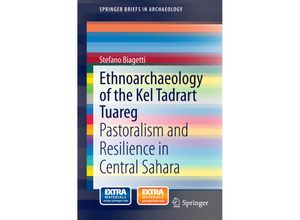This book focuses on the issues of resilience and variability of desert pastoralists
explicitly challenging a set of traditional topics of the discourse around pastoralism in arid
lands of the Old World. Based on a field research carried out on the Kel Tadrart Tuareg in
Libya various facets of a surprisingly successful adaptation to an extremely arid environment
are investigated. By means of an ethnoarchaeological approach explored are the Kel Tadrart
interactions with natural resources the settlement patterns the campsite structures and the
formation of the pastoral archaeological landscape focusing on variability and its causes. The
resilience of the Kel Tadrart is the key to understand the reasons of their choice to stay and
live in the almost rainless Acacus Mountains in spite of strong pressure to sedentarize in the
neighboring oases. Through the collection of the interviews participant observation mapping
of inhabited and abandoned campsites remote sensing and archival sources various and
different Kel Tadrart strategies perceptions and material cultures are examined. This book
fills an important gap in the ethnoarchaeological research in central Sahara and in the study
of desert pastoralism. Desert lands are likely to increase over the next decades but our
knowledge of human adaptations to these areas of the world is still patchy and generally biased
by the idea that extremely arid lands are not suited for human occupation.



